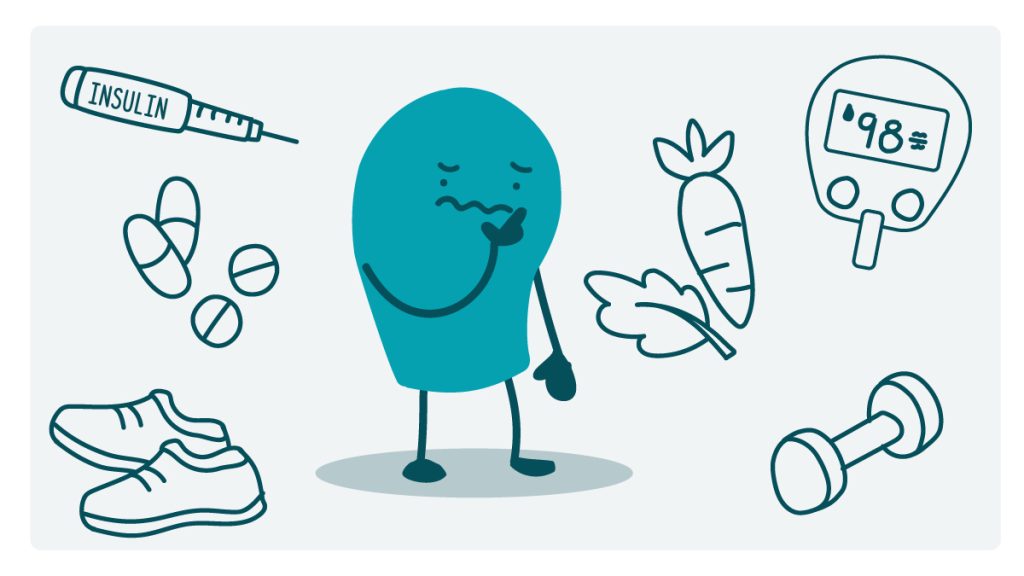
If you’re a loyal We ❤️ Health Literacy reader, you’ve no doubt heard us talk about communicating with empathy. This week, we wanted to practice building empathy — because sometimes, it can help to step away from the page and re-center our audience to make sure we’re meeting folks where they are. Let’s use people with diabetes as an example.
First, the facts: diabetes is a health condition that affects how your body processes sugar (glucose). There are 2 main types of diabetes: type 1, an autoimmune condition where the body doesn’t produce insulin, and type 2, where the body doesn’t use insulin properly. Managing diabetes (of either type) involves monitoring blood sugar levels, eating a balanced diet, and sometimes taking medicine.
Sounds simple, right? Not quite. Without the right info and support, managing diabetes can feel like navigating a maze. People who’ve recently been diagnosed with diabetes may need to:
- Learn complex terms, like A1C, hypoglycemia, and glucose. When you’re still learning the lingo, reading health education materials can feel especially taxing.
- Learn new skills, like monitoring blood sugar and injecting insulin or other medicines. These tasks can feel overwhelming for many people with diabetes — plus, as we all know, medical devices don’t always come with the clearest instructions.
- Adjust to lifestyle changes, like counting carbs during meals. Do you know how many carbs are in a hot dog bun? Imagine needing to figure that out and do math every time you eat. This focus on nutrition can be stressful — or even destabilizing — for anyone who’s had complex experiences with food and weight.
- Get comfortable with uncertainty. Constantly making real-time decisions about food intake and adjusting medicines like insulin can be a major — and very stressful — task.
Not to mention, any new diagnosis can be surprising and upsetting. Especially diabetes, which is often wrapped up in harmful stigma, shame, and blame. Now seems like a good time for our favorite reminder: health literacy is a state, not a trait! That means anyone can have limited health literacy skills sometimes — like when you’re faced with a new or stressful diagnosis.
While we may not be able to completely untangle these complexities, approaching diabetes communication with empathy can make the topic feel a lot more manageable. Here are some ways to get started:
- Acknowledge that managing diabetes is complicated — and living with multiple health conditions can make it even more so. A little validation can go a long way!
- Watch out for sneaky shame-based messages, especially when you’re writing about nutrition and physical activity.
- Acknowledge what experts know and don’t know. When it comes to new treatment options like GLP-1 medications, it’s especially important to spell out the benefits, the known risks, and the unknowns.
- Reduce cognitive load by using simple terms when you can, defining medical terms your audience needs to know (like A1C, for example), and putting numbers in context.
- Provide step-by-step instructions for processes like blood sugar testing and injections.
- Use the teach-back method when you’re talking to patients one-on-one.
The bottom line: Managing diabetes can feel overwhelming — especially for people who are processing a new diagnosis. As health communicators, we can lighten our audiences’ load by communicating about diabetes with empathy.
Copy/paste to share on social (and tag us!): Managing #diabetes can feel overwhelming — especially for people who are processing a new diagnosis. Add a little #empathy to your diabetes content with these tips from CommunicateHealth: https://communicatehealth.com/wehearthealthliteracy/communicating-about-diabetes-with-empathy #HealthComm
Browse recent posts